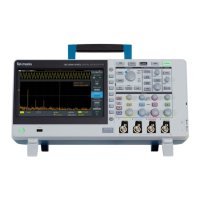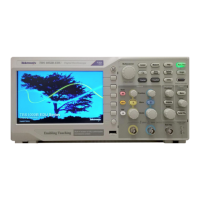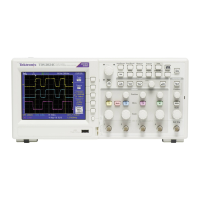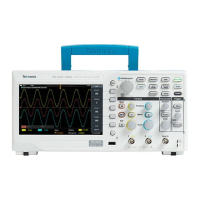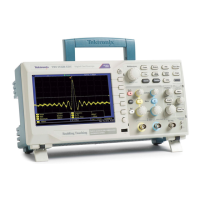Maintenance
Table 4-2: Inte
rnal inspection checklist
Item Inspect for Repair action
Circuit boards
Loose, broken
, or corroded solder
connections. Burned circuit boards. Burned,
broken, or cracked circuit-run plating.
Remove and rep
lace damaged circuit board.
Resistors Burned, cracked, broken, blistered condition. Remove and replace damaged circuit board.
Solder connections Cold solder or rosin j oints.
Resolder joi
nt and clean with isopropyl
alcohol.
Capacitors Damaged or leakin g cases. Corroded solder
on leads or terminals.
Remove and r
eplace damaged circuit board.
Wiring and cables Loose plugs or connectors. Burned, broken,
or frayed wiring.
Firmly seat connectors. Repair or replace
modules with defective wires or cables.
Chassis Dents, deformations, and damaged
hardware
.
Straighten, repair, or replace defective
hardware
.
Interior cleaning
1. Blow off
dust with dry, low-pressure, deionized air (approximately 9 psi).
2. Remove any remaining dust with a lint-free cloth dampened in isopropyl
alcoho
l (75% solution) and rinsed with warm deionized water. (A
cotton-tipped applicator is useful for cleaning in narrow spaces and on circuit
boards.)
NOTE. If, after performing steps 1 and 2, a module is clean upon inspection,
skip the following steps.
If there is s till dust or dirt on the module, the oscilloscope may be spray washed
using a solution of 75% isopropyl alcohol by following these steps:
a. Spray wash dirty parts with isopropyl alcohol and wait 60 seconds for the
majority of the alcohol to evaporate.
b. Use hot (120 °F to 140 °F) deionized water to thoroughly rinse them.
c. Dry all parts with low-pressure, deionized air.
d
.
D
ry all components and assemblies in an oven or drying compartment
using low-temperature (125 °F to 150 °F) circulating air.
Lubrication
There is no periodic lubrication required for this oscilloscope.
4–4 TBS2000 Series Service Manual
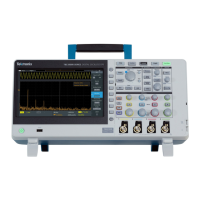
